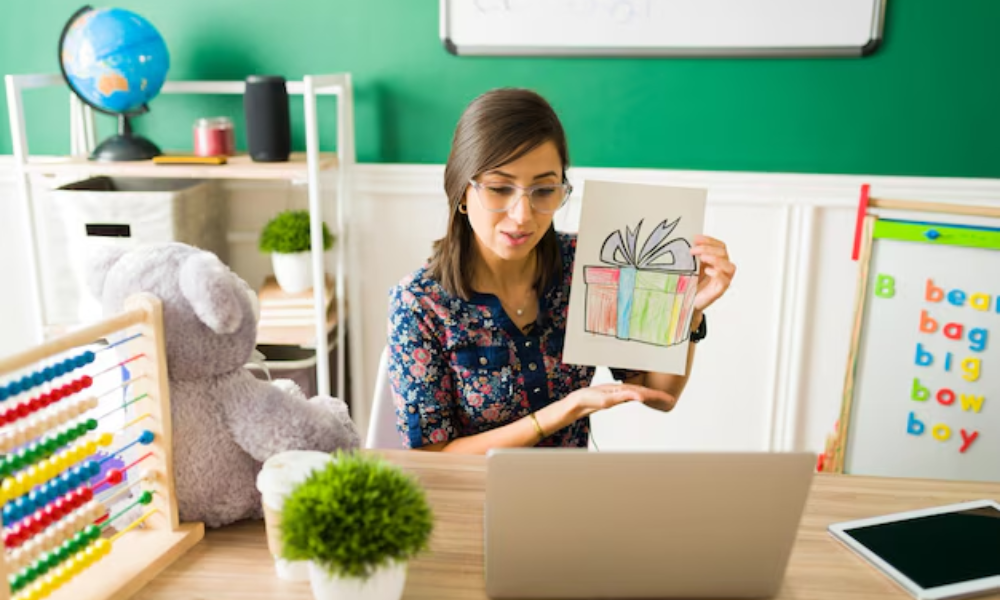Our world is rapidly evolving, driven by advanced technological development and growing awareness of critical issues such as education, health, and science.
This shift has revolutionized teaching methods, transitioning from traditional lecture-based learning to more engaging and interactive approaches.
Modern teaching practices, such as those in leading boarding schools in Dehradun, have embraced teaching learning materials like maps, charts, videos, and interactive tools to make education more engaging and impactful.
Teaching learning materials have gained significant importance in recent years for the following reasons:
1. Fostering Critical and Creative Thinking

The shift from passive to active learning has encouraged students to engage deeply with the material, promoting logical reasoning and creativity. For instance, in some Dehradun schools, teachers recreate historical scientific experiments to help students explore concepts independently.
Example:
To teach the concept of cells, teachers provide students with tools similar to those used by Robert Hooke during his discovery. Students use critical thinking to replicate and understand the process, leading to deeper insights and hands-on learning.
This approach enables students to develop the problem-solving skills required to become future innovators and thought leaders.
2. Enhancing the Joy of Teaching Learning Materials

Modern teaching techniques have made education more enjoyable for students. Unlike the monotonous, exam-centric methods of the past, today’s classrooms focus on engaging students through practical content, interactive tools, and real-world applications.
Outcome:
Students no longer view education as a chore. Instead, they see it as an exciting journey of discovery, where knowledge is more important than mere grades.
3. Simplifying Complex Concepts

Teaching learning materials have revolutionized the way complex subjects are explained. Previously, students struggled with rote memorization due to unclear explanations. Today, educators use innovative tools and methods to break down complex ideas into digestible parts.
For Example:
Diagrams, videos, and 3D models are used to illustrate intricate topics like human anatomy or historical events. These visual aids make it easier for students to comprehend and retain information.
4. Leveraging Familiarity for Better Understanding

Teachers now use materials that resonate with students, such as charts, photographs, and multimedia. These tools are more relatable than plain text, helping students absorb information effortlessly.
Key Benefit:
Students connect with the material on a personal level, improving retention and understanding.
5. Applying Knowledge to Real-World Scenarios

Modern education emphasizes practical learning that students can use beyond the classroom. Interactive sessions and hands-on activities equip students with skills that are directly applicable to real-world challenges.
For Example:
In science classes, students are encouraged to design experiments or solve environmental problems, bridging the gap between theoretical knowledge and practical application.
6. Reducing Anxiety and Boredom

Engaging teaching methods have significantly reduced the stress associated with traditional education. Students are now more focused on gaining knowledge rather than obsessing over grades.
Engagement Techniques:
- Gamified learning experiences.
- Collaborative group projects.
- Discussions on topics of personal interest to students.
This engaging approach eliminates boredom and anxiety, making classrooms enjoyable spaces for learning.
7. Boosting Student Motivation

Motivation plays a crucial role in a student’s ability to learn effectively. When teachers involve students actively in the learning process using relatable materials, they feel empowered and motivated to perform better.
Motivational Strategies:
- Assigning tasks that require creative thinking.
- Encouraging students to participate in decision-making processes related to their learning.
This ensures students remain enthusiastic and invested in their educational journey.
Conclusion
Teaching learning materials have transformed education, making it more interactive, engaging, and impactful.
By fostering critical thinking, simplifying complex concepts, and connecting knowledge to real-world applications, these tools have made learning a joyful and fulfilling experience for students.
As education continues to evolve, integrating innovative teaching learning materials will remain essential for creating classrooms that inspire, empower, and prepare students for the challenges of tomorrow.
By adopting these modern approaches, educators can cater to diverse audiences, ensuring every learner achieves their full potential.










Teaching materials help teacher make students understand easily…ecole global provide best materials